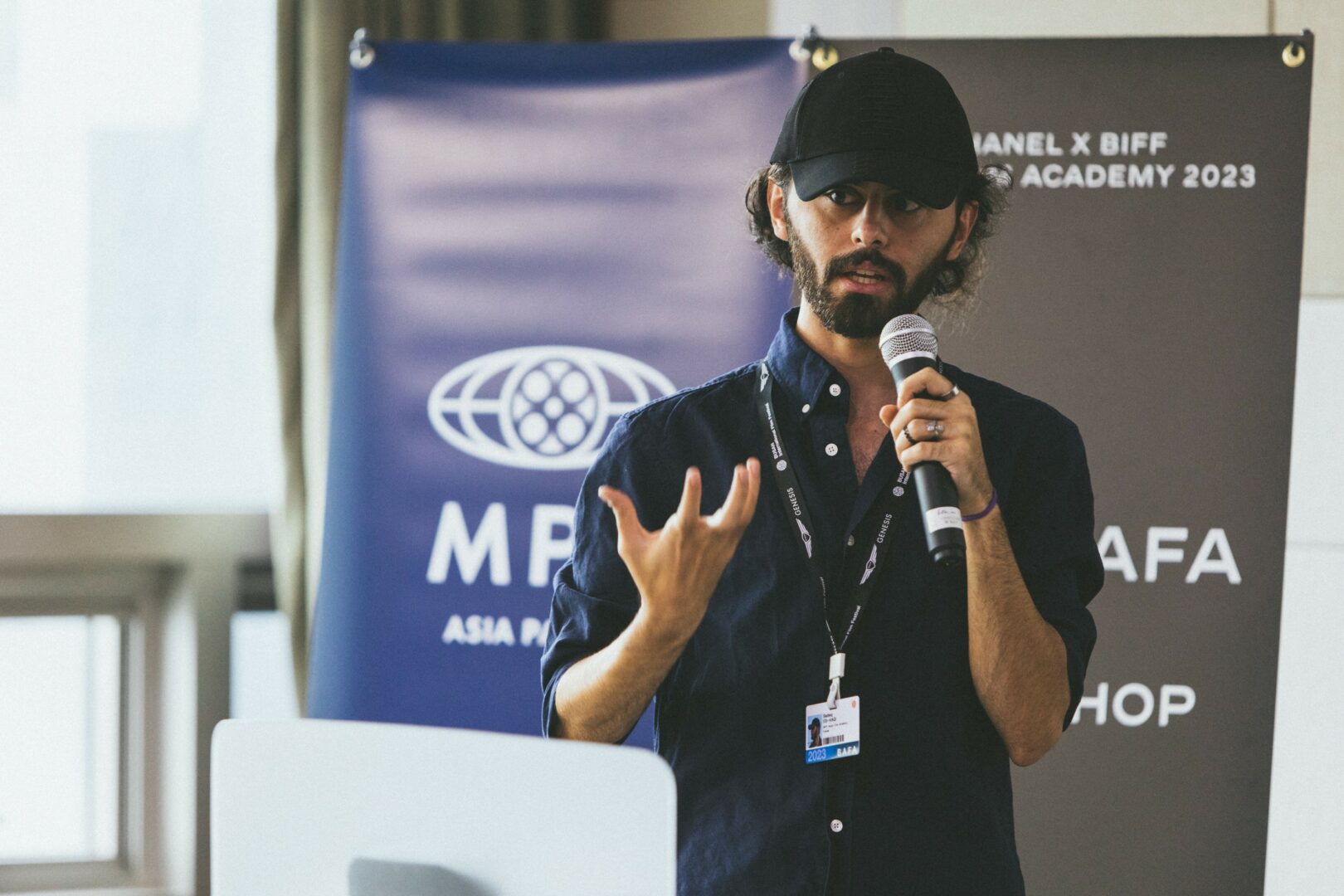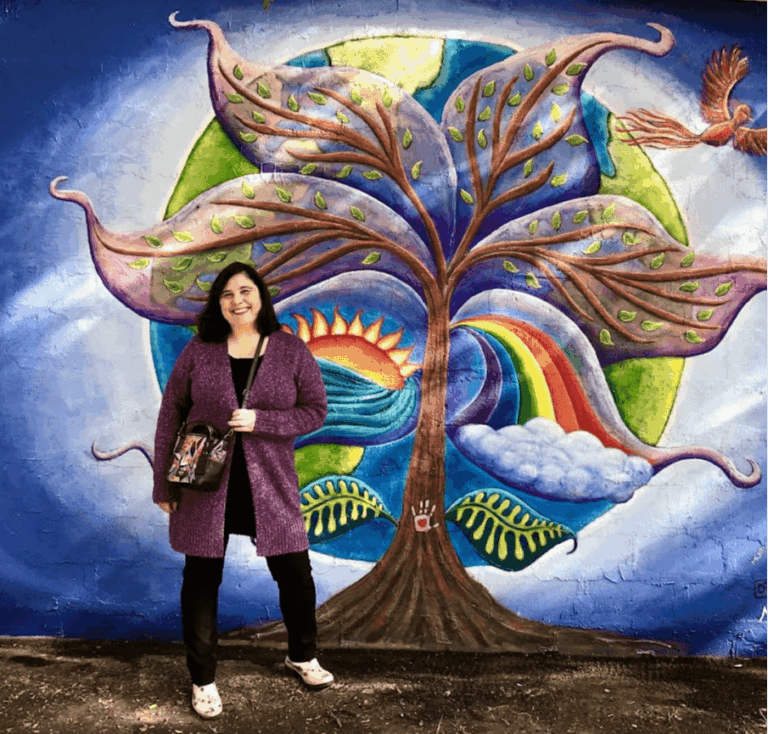We recently connected with Tressa Lacy and have shared our conversation below.
Tressa, we can’t begin to explain how much we appreciate you sharing about your PPD experience, but we can say that so many in our community are suffering from or have suffered from postpartum issues including postpartum depression and so you sharing your story and how you overcame it might help someone who is going through it right now or in the future. What can you share with us about how you overcame PPD? For readers, please note this is not medical advice, we are not doctors, you should always consult professionals for advice and that this is merely one person sharing their story and experience.
Holding my newborn daughter, I was overcome by a love so deep it felt as though my very existence had shifted. It was the moment I had dreamed of, and looking down at her tiny face, it was as magical as I had imagined. Her bright eyes and delicate chin mirrored my own, and for a moment, everything felt perfect.
But there was something beneath the wonder and joy—something no one warned me about.
Deep in the pit of my stomach, an unrelenting need to protect her took hold. At first, it was simply a fierce instinct to shield her from harm. But soon, it grew into a raging torrent, twisting my thoughts like a stormy sea.
It was as if a veil had been lifted over my childhood. Memories of working in my family logging business flooded back—the demands, the dangers, the feeling of my worth being measured in board feet. I realized how much I craved safety and security as a child and vowed that my daughter would have both.
Yet my fierce love and drive to protect quickly became weapons turned against me. I stopped sleeping, my hand resting on her tiny belly night after night to ensure she kept breathing. I saw danger everywhere: the window, the stove, the water. Every shadow seemed to harbor a threat.
In my efforts to protect her, I lost myself.
Anxiety consumed me, twisting my thoughts until they no longer felt like my own. The whispers in my mind grew louder, telling me I was broken and worthless. Shame kept me silent, convincing me that I had done something wrong to feel this way and that it would all disappear if I were a better person.
Asking for help felt like a weakness. Worse, I feared it would mean judgment—that I’d be deemed an unfit mother.
It wasn’t until I hit rock bottom—standing at the edge of a decision I can barely bring myself to write about—that I realized I couldn’t do it alone.
The first lifeline came from my sister. She saw through the walls I had built and offered a simple truth: The mind can be broken like the body.
“When your leg was shattered in a logging accident, was it because you did something wrong?” she asked. “Did you simply think your way out of it, and the bones and muscles knit themselves back together? Did you heal alone?”
Her words helped me see my struggle not as a failure but as a condition anyone could experience—something that needed care and treatment, not shame.
The second lifeline came soon after. I was sitting across from my husband at a quiet restaurant, my sister’s words reverberating in my mind. “You know that sign on the door—‘Speak Up When You’re Down’?” I asked.
My husband set his chopsticks down, his eyes meeting mine with quiet concern. “What’s going on?”
“I’ve been overwhelmed,” I said, hesitating. “I don’t know how to make myself better. I have thoughts about… well, bad thoughts… about the baby… getting hurt… they haunt me all the time.”
I closed my eyes, plagued by the mentality I grew up with—that if I was broken, I was worthless. I waited for my husband to take the baby, turn around, and leave.
But when I opened my eyes, he was still sitting before me. His gaze carried the same compassion it had since the day we met. He waited for me to meet his eyes before speaking.
“Sunshine, I am so sorry you’re going through this,” he said. “It must be terrifying. How can I help? How can we get through this together?”
The dam broke. Pent-up words and emotions I’d been holding back rushed out all at once. For the first time in long time, I felt a glimmer of relief.
Shedding light on my shame and being met with unwavering support put me on the path to recovery. I started medication and therapy and joined support groups. Each was another small light piercing the darkness. Healing was messy and nonlinear, and there were days I doubted I’d ever find my way back. But slowly, the storm began to subside.
I began to confront the shadows of my past, release the shame, and name the pain I’d carried for too long. Eventually, I could separate the dangers of my childhood from the present and see my daughter’s world for what it was: a safe, loving place where she could thrive.
The compassion poured out to me in my darkest days taught me this: Our worth is not tied to how much we can endure. It’s not measured by how strong we appear or how much we accomplish. It doesn’t diminish on days we can do little more than lift our heads from the pillow.
Today, when I look at my daughter, I see more than a reflection of myself—I see the unshakable truth that individual worth is inherent and unshakable. This understanding lights the way through my darkest days. It gives me the strength to rise, the power to be healed, and the vision to create a world where everyone is guided by the knowledge that they are valuable simply because they exist.

Let’s take a small detour – maybe you can share a bit about yourself before we dive back into some of the other questions we had for you?
At fourteen, I was involved in a logging accident that changed everything. As I stared at the broken bones and the wide gash running down my leg, I realized my worth in that harsh environment was tied to the labor I could provide. And broken, I felt worthless. My mission became redefining value beyond productivity and helping others uncover the strength and worth they may not yet see in themselves. I pursue this mission through writing, speaking, teaching, and championing change.
One thing I’m especially excited about is my upcoming memoir, Lumberjack Girl. It offers an intimate glimpse into life as one of thirteen siblings raised in rural Idaho to replace grown men in the family logging business. The book shares my journey before and after the accident, where, haunted by the cost of survival, I push my broken body to its limits to atone for the accident and prove my life is worth saving. Writing it has been transformative and I’m excited to connect with readers who see pieces of their struggles reflected in mine.
Beyond writing, I find incredible fulfillment connecting with people through speaking engagements. There is something powerful about reminding individuals of their inherent worth that makes them feel seen and heard. I’ll never forget one audience member who told me in French, “I do not speak English, but I understood every word. I know I matter.” She pointed to her heart, and I understood, too. There is a universal language of love and value that transcends cultures and backgrounds, reminding us of our value and the importance of fulfilling our unique missions.
In addition to writing and speaking, my role as an accounting professor allows me to mentor students from diverse backgrounds, many of whom face significant challenges. It brings me immense joy to help them see what so many people on my journey helped me see: our present circumstances do not define our potential. My proudest moments as an educator are when students reach their goals.
My biggest goal is to continue igniting hope by helping people recognize the value they bring to the world just by being in it.

If you had to pick three qualities that are most important to develop, which three would you say matter most?
Looking back on my journey, I realize that three things have had the most impact on shaping who I am today: finding the courage to ask for help, leaning into my strengths, and cultivating compassion.
Finding the courage to ask for help has not come easily. I grew up believing hard work and perseverance were the only keys to success. In my family, pulling yourself up by your bootstraps wasn’t just encouraged but glamorized. Asking for help was seen as a weakness, even shameful. To put that into perspective, my family chose a different path when the Timber Wars, Endangered Species Act, and North American Free Trade Agreement caused half of all loggers to leave the industry. My parents replaced the employees in their logging business with us—their 13 children, ages 3 to 14. By the time I was five years old, I wasn’t a kid anymore; I was an unpaid employee in one of the most dangerous jobs in America. We faced unimaginable challenges. Protestors shot at us, and we watched fellow loggers die. Still, we were resigned to our scant living in a tiny school bus on an isolated mountaintop—because it meant we didn’t take help.
This bootstrap mentality came at a high cost, especially the day I suffered a devastating logging accident. I desperately needed help, yet in that moment, I saw firsthand the lengths people would go to avoid asking for help. Whether for fear of judgment, cultural expectations, or not knowing where to turn, too often, we carry the world’s weight on our shoulders, even when it harms us and those we love.
My experience taught me a hard truth: poverty is a structural problem, not simply a matter of personal responsibility. The idea that hard work alone leads to success ignores the realities of systemic inequality, diminishes the value of those who help us along the way, and overlooks the toll it takes on us in the long run. Hard work and perseverance in a dying industry did not bring success. Instead, it brought delayed acceptance of reality, diminished livelihood, and a lifetime of complex trauma.
I’ve since learned that asking for help isn’t a weakness—it’s a strength because, regardless of where we come from, no one succeeds alone.
As I gained the courage to ask for help, I learned another essential skill: how to lean into my strengths.
When I founded Undaunted Women, a nonprofit focused on removing barriers to empowerment for marginalized women and children, I knew where my strengths and skills lay—creating the financial backbone, organizational structure, and policies to support the nonprofit. But I also knew there were roles I couldn’t fill as effectively as others could. So, I surrounded myself with incredible people with the skills and passion to lead in areas where I wasn’t as strong. Our president set the vision and strategy for the organization with exceptional leadership skills. Our administrative vice president oversaw day-to-day operations, ensuring the organization ran smoothly. Our volunteer coordinator used their human resource expertise to recruit, support, and inspire a strong team of volunteers. Compassionate individuals with deep emotional intelligence worked directly with families, stewarding their own experiences of trauma so they could be fully available to those we served. Rather than being paralyzed by the things I could not yet do, I embraced my strengths and opportunities for growth. I sought out people who excel in areas I don’t, and together, we created a much more significant impact.
As I gained the ability to lean into my strengths, I learned to lean into opportunities for growth by cultivating compassion. Whether self-criticism, doubt, or overwhelming emotions, we all have moments when our inner voice is harsh. For much of my life, that inner voice has driven me to do more and achieve more, all in the name of proving my worth. But too often, it has come at the cost of my health, relationships, and overall well-being.
Recently, I leaned into this opportunity for growth by attending an emotional resilience workshop where I was asked to examine a single, pervasive thought that drives my decisions. It is: “I am worth what I produce.”
We were then asked to think about where the thought stems from and how it makes us feel. Reflecting, I saw that this thought stems from my upbringing. It creates a bottomless pit of shame in my stomach and keeps me from living a complete and balanced life. Later, we were asked to rewrite the thought into something more productive. One of the tools I took away from this experience was meeting thoughts and feelings with compassion, as Dr. Kristin Neff describes beautifully in her book Self-Compassion. When I catch myself spiraling, I pause and say to myself:
“It’s hard to feel this way. We all experience hard things sometimes. How can I meet this thought with tenderness? Because the reality is that my value isn’t based on what I do. I am valuable simply because I exist.”
These simple phrases help me create space between my thoughts and my actions. They remind me that my pervasive thoughts do not have to drive my decisions or control my life.
As I’ve learned to meet my thoughts and feelings with kindness, I’ve been able to rewrite the script and navigate life with greater clarity and strength.
Learning to ask for help and lean into my strengths has helped me surround myself with amazing individuals and cultivate the compassion necessary to build resilience, nurture relationships, and create meaningful change. It has reminded me that we all have a unique contribution to make, and we’re at our best when we work with others to bring them to life.

Okay, so before we go, is there anyone you’d like to shoutout for the role they’ve played in helping you develop the essential skills or overcome challenges along the way?
When I think about the people who have been instrumental in helping me overcome challenges and develop the qualities I needed to be successful, Richard Holt immediately comes to mind. He was a seventy-six-year-old veteran, bent nearly in half at the waist from years of hard labor and three gunshot wounds, with one eye permanently shut. His story was as rough and worn as his boots, and he was among the last people anyone would expect to have such a profound impact. Yet, his quiet wisdom and generosity changed my life.
Richard came into my world when my family’s sawmill business was on the brink. Life was chaotic, dictated by relentless work and an unyielding bootstrap mentality.
To most people, Richard was a curiosity. His past was as colorful as it was tragic, between seven failed marriages and enough odd jobs to fill three lifetimes. His lifestyle often sparked rumors, like how he buried his money in the yard instead of trusting a bank or depended on his cats tapping him on the shoulder to tell him when to take a turn when driving. Yet beneath his weathered clothes and a belt wrapped around his waist twice was a hidden kindness and a manifestation of what happens when we give people a second chance.
My life changed when he parked his only possession— a beat-up Chevy pickup next to our sawmill. Because Richard didn’t just notice people—he saw them. In a family of 13 children, where worth was often measured in board feet and tasks complete, he took time to learn our names and notice who we were as individuals. This was no small feat in a household where even my parents struggled to keep everyone straight.
Richard had a knack for serving others in ways that allowed them to maintain their dignity. He quietly found ways to help, like raising goats only to send all the milk and meat home with us or cultivating a garden to send all the vegetables to our house, insisting we were doing him a favor.
I didn’t understand why he went without to help us or why he never had a comfortable home with running water and electricity when he could have. Not until the day he pulled out a stack of hundred-dollar bills. Then, he revealed his goal for the past eleven years: to help my sisters and me pay for college, sacrificing his comfort to ensure we had opportunities he never did.
Over the 25 years I had the privilege of calling Richard friend, he showed me the value of believing in something bigger than myself, the importance of quiet acts of service, and the strength that comes from seeing and valuing others for who they are.
To this day, Richard’s influence echoes in everything I do. Whether I’m speaking to audiences about inherent worth, mentoring students, serving my community, or raising my five children, I strive to truly see others the way he did—beneath the weathered boots, the bent frame, and the quirks that hide their struggles—and help them uncover the strength and worth they may not yet see in themselves.
Contact Info:
- Website: https://www.tressalacy.com/
- Instagram: https://www.instagram.com/tressalacy1/
- Facebook: https://www.facebook.com/BrooklynShae123
- Linkedin: https://www.linkedin.com/in/tressalacy/
- Twitter: https://x.com/LacyTressa

Image Credits
SchlickArt – A Visual Marketing Company
so if you or someone you know deserves recognition please let us know here.




